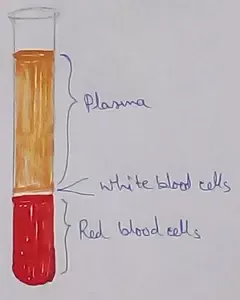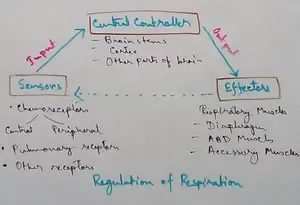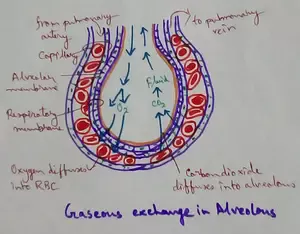Passive Voice (Present Continuous and Past Continuous)
Passive Voice refers to a type of sentence structure in which the subject is the recipient of the action of the Verb.
There are two basic rules to be followed for converting sentences from Active to Passive Voice, which are common for all tenses.
1. Subject and Object positions are inter-changed.
2. Only third form of the Verb (Past Participle) is used as the main form of Verb in a Passive voice sentence.
Now, we come specifically to the rules to be followed for converting an Active Voice sentence in Present and Past Continuous Tense.
The Rules for using Auxiliary Verb are different for each tense in Passive Voice sentences.
Rules for Converting Active Voice to Passive Voice in case of Present Continuous.
· Active Voice sentences in the present Continuous Tense follow the structure:
Subject + is/are/am +ing form of the verb + object.
Passive sentences in the same tense shall follow the sentence structure:
Object of the Active Sentence + is/are/am +being +past participle +by+ subject of the Active Voice sentence.
Examples:
Active: I am reading a book.
Passive: A book is being read by me.
Active: The driver is driving the car.
Passive: The car is being driven by the driver.
Active: She is writing a book.
Passive: A book is being written by her.
Active: The laborers are building the hospital.
Passive: The hospital is being built by the labourers.
Active: She irritates me.
Passive: I am irritated by her.
· When the Verb is followed by a preposition:
Examples:
Active: My friend is talking to the teacher.
Passive: The teacher is being talked to by my friend.
Active: I am looking for him.
Passive: He is being looked for by me.
· When the Active Voice sentence is in negative:
Example:
Active: She is not taking her exam this year.
Passive: The exam is not being taken by her this year.
· When the Active voice sentence is in Interrogative form:
1. If the Active Voice sentence starts with the words ‘When’, ‘Whose’, ‘Why’, ‘Which’, ‘How’ the passive voice sentences shall follow suit.
Example:
Active: Why are you not doing your homework?
Passive: Why is the homework not being done by you?
2. If the Active Voice sentence start with ‘Who’ or ‘Whose’, then the Passive Voice shall start with ‘By Whom’ or ‘By Whose’.
Example:
Active: Who is helping you in your maiden venture?
Passive: By whom are you being helped in your maiden venture?
3. When the Active Voice starts with ‘Whom’, the Passive Voice starts with ‘Who’.
Example:
Active: Whom are you calling at this hour?
Passive: Who is being called by you at this hour?
Rules for Converting Active Voice to Passive Voice in case of Past Continuous.
· Active Voice sentences in the Past Continuous Tense follow the structure:
Subject + was/were + ing form of the verb + object.
· Passive sentences in the same tense shall follow the sentence structure:
Object of the Active Sentence + was/were +being +past participle +by+ subject of the Active Voice sentence.
Examples:
Active: I was reading a book.
Passive: A book was being read by me.
Active: The driver was driving the car.
Passive: The car was being driven by the driver.
Active: She was writing a book.
Passive: A book was being written by her.
Active: The laborers were building the hospital.
Passive: The hospital was being built by the laborers.
Active: She irritated me.
Passive: I was irritated by her.
· When the Verb is followed by a preposition:
Examples:
Active: My friend was talking to the teacher.
Passive: The teacher was being talked to by my friend.
Active: I was looking for him.
Passive: He was being looked for by me.
· When the Active Voice sentence is in negative:
Examples:
Active: She was not preparing her lessons.
Passive: The lesson was not being prepared by her .
· When the Active voice sentence is in Interrogative form:
1. If the Active Voice sentence starts with the words ‘When’, ‘Whose’, ‘Why’, ‘Which’, ‘How’ the passive voice sentences shall follow suit.
Example:
Active: Why were you doing your homework?
Passive: Why was the homework not being done by you?
2. If the Active Voice sentence start with ‘Who’ or ‘Whose’, then the Passive Voice shall start with ‘By Whom’ or ‘By Whose’.
Example:
Active: Who was helping you in your maiden venture?
Passive: By whom were you being helped in your maiden venture?
3. When the Active Voice starts with ‘Whom’, the Passive Voice starts with ‘Who’.
Example:
Active: Whom were you calling at that hour?
Passive: Who was being called by you at that hour?
English Grammar and Composition
From Passive Voice (Present Continuous and Past Continuous) to HOME PAGE
Recent Articles
-
What Is Plasma? | Blood Plasma | Proteins | Nutrients | Cholesterol
Nov 07, 25 10:29 AM
Blood is a mobile fluid which is a connective tissue and is derived from the mesoderm like cell any other connective tissue. Colour of blood is reddish and that flows inside the blood vessels by means… -
Disorders of Respiratory System | Tuberculosis | Pleurisy | Emphysema
Oct 28, 25 11:39 PM
Tuberculosis is very common disease and is caused by a type of bacteria called Mycobacterium tuberculosis. This disease causes different trouble in the respiration and infection of several parts of th… -
Regulation of Respiration | Respiratory Centres | Inspiratory Area |
Oct 14, 25 12:13 AM
Respiratory Centre is the area that controls the rate of respiration and it is observed to be located in medulla oblongata and pons. Respiratory Centre has the following will dispersed components like… -
Explain Transport of Gases | External Respiration | Tissue Respiration
Oct 09, 25 11:35 PM
In humans gaseous exchange is completed in the following ways the steps are - External Respiration or Breathing - Breathing in false taking in of Oxygen and giving out of carbon dioxide in the body. M… -
Kind and Number of Teeth | Location of Teeth in Mouth | Care of Teeth
Sep 11, 25 12:52 AM
Kind and Number of Teeth






New! Comments
Have your say about what you just read! Leave me a comment in the box below.